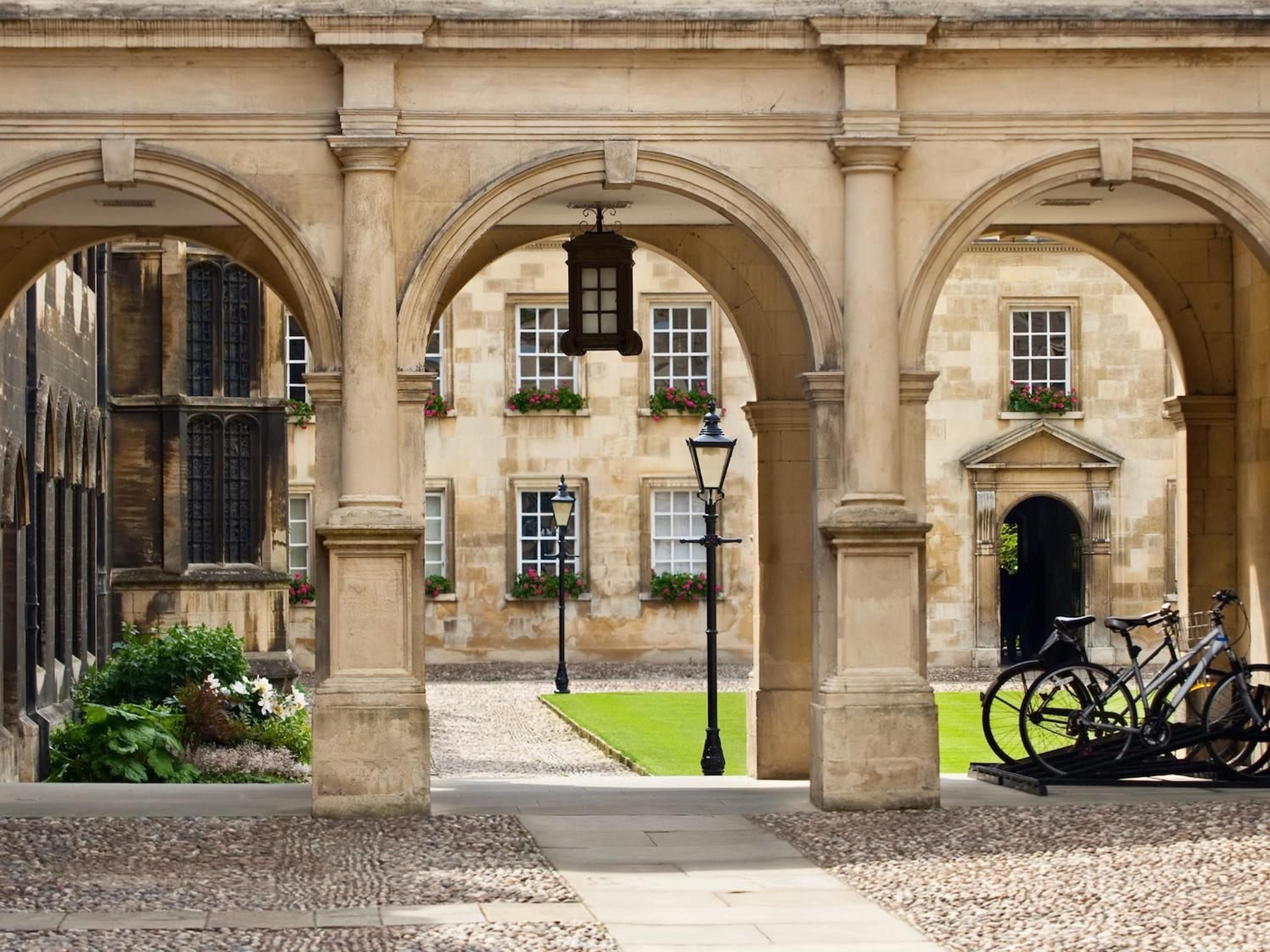
Table of Contents
During high school, two of the most important decisions you will make are where you want to go to school and what you want to major in. Going to a good undergraduate university will set you up for success in your future job search and any higher education degrees.
Here are the top 10 undergraduate schools, based on lists by US News, Forbes, and Niche to help you decide what schools to apply for and attend.
1. Harvard University
Harvard is a private institution that was founded in 1636 by the General Court of the Massachusetts Bay Colony. It is located outside Boston in Cambridge, Massachusetts in an urban setting. The campus size is 5,076 acres and is made up of 13 schools and institutes, including its top-ranked business school, medical school, and law school. The academic calendar is based on semesters.
Harvard boasts the oldest library collection in the US and the largest private collection in the world. Eight presidents have graduated from Harvard, including Franklin Delano Roosevelt and John F. Kennedy. Other notable alumni include Henry David Thorough and Helen Keller.
Class Profile
Acceptance Rate: 4.7%
Applicants: 57,786
Admitted: 2,320
International Students: 15.6%
Average GPA: 4.18 (Unweighted)
Average SAT: 1520
Average ACT: 34
Intended Fields of Concentration
Social Sciences: 28.1%
Biological Sciences: 18.3%
Humanities: 15.3%
Engineering: 10.3%
Computer Science: 8.1%
Physical Sciences: 7.6%
Undecided: 6.3%
Math: 6%
Tuition and Fees
Tuition: $52,659
Fees: $4,602
Room: $12,056
Board: $7,446
Estimated personal expenses: $3,500
Estimated travel costs: $0-4,150
Total Estimated Cost: $80,263-84,413
See more details at Harvard University.
2. Massachusetts Institute of Technology
The Massachusetts Institute of Technology is a private institution and was founded in 1861. It is located in Cambridge, Massachusetts in close proximity to Harvard University. The academic calendar runs on a 4-1-4 timeline, which includes two four-month-long semesters and a month-long mini-term in between. In practice, this means that students will attend a fall and spring semester, and spend January in one specific class or project.
The focus of MIT is on scientific and technological research and the institute is divided into five schools, which include its highly ranked graduate schools like the School of Engineering and the Sloan School of Management. Freshmen are required to live on campus and about 70% of undergraduates also reside on campus. Distinguished alumni include Buzz Aldrin and the UN Secretary-General Kofi Annan.
Class Profile
Acceptance Rate: 4.1%
Applicants: 33,240
Admitted: 1,365
Female: 47%
International: 10%
Average GPA: 4.17 (Unweighted)
Middle 50% Score Range –
ACT: 34-36
SAT: 780-800 (Math), 730-780 (Reading and Writing)
Tuition and Fees
Tuition: $57,590
Student Life Fee: $396
Housing: $11,980
Meals: $6,810
Educational Supplies: $850
Personal Expenses: $2,224
Total: $79,850
To discover more, visit the Massachusetts Institute of Technology.
3. Yale University
Yale University is also a private institution that was founded in 1701 in New Haven, Connecticut. It runs on a semester-based academic calendar and is best known for its economics, history, political science, and drama programs. Its sports teams compete in the Ivy League conference and are well known for their rivalry with Harvard. In addition to its undergraduate programs, Yale also has many higher-education institutions like the law school, business school, art school, and nursing school. Each college has a head and a dean who live at the college. During their time at Yale, students will live in one of its 14 residential colleges.
Yale is also well known for its secret society, the most famous of which is the Skull and Bones Society whose members include George W. Bush and John Kerry. Other distinguished alumni include Meryl Street, Bob Woodward, and Edward Norton.
Class Profile
Acceptance Rate: 6.6%
Applicants: 35,220
Enrolled: 1,267
Male to Female Ratio: 52:48
Minority: 55%
First-Generation: 19%
International: 9%
ACT Range: 88% at 32-36
SAT Range
Math: 68% at 760-800
ERW: 49% at 760-800; 38% at 700-750
Tuition and Fees
Tuition: $62,250
Room: $10,500
Board: $7,950
Health Insurance: $2,756
Student Activity Fee: $125
Total: $83,581
Check out Yale to learn more.
4. Princeton University
This private institution was founded in 1746 in Princeton, New Jersey, and operates on a semester-based academic calendar. Its mascot is the Princeton tiger and the sports teams play in the Ivy League conference. The women’s and men’s lacrosse teams are known for their consistently strong performances.
Students live in one of six residential colleges that provide communities and dining services. All undergraduate students are required to write a senior thesis or do an independent project (for engineering students). Notable alumni include US President Woodrow Wilson, model/actress Brooke Shields, and former first lady Michelle Obama.
Class Profile
Acceptance Rate: 5.6%
Total Applicants: 37,601
Total Admits: 1,647
Female: 49%
First-Generation: 18%
Middle 50% ACT: 32-35
Middle 50% SAT: 740-800 (Math); 710-770 (ERW)
Tuition and Fees
Tuition: $57,690
Room: $11,000
Board: $7,710
Miscellaneous Expenses: $3,500
Total: $79,900
See more information at Princeton University.
5. Columbia University
Founded in 1754 in New York City, Columbia University is a private institution with three undergraduate schools: Columbia College, the Fu Foundation School of Engineering and Applied Science, and the School of General Studies. It also boasts several highly-ranked graduate schools, including the business school, teachers college, law school, and medical school. It runs on a semester-based academic calendar.
The main campus is located on the Upper West Side of Manhattan with a campus size of 36 acres. The university offers a broad range of student activities, including 28 Greek chapters. More than 90% of the students live on campus. Distinguished alumni include the first Supreme Court Chief Justice John Jay and former President Barack Obama.
Class Profile
Acceptance Rate: 3.9%
Total Applications: 60,551
Total Admits: 2,358
Female: 50%
First-Generation: 17%
International: 13%
Middle 50% SAT: 1510-1560
Middle 50% ACT: 34-35
Tuition and Fees
Tuition (for a 30-point program): $58,440
Cost of Living (including room, board, and supplies): $26,010
Student Life Fee (Fall): $657
Health Insurance (Annual): $3,892
Total: $88,999
Learn more at Columbia University.
6. Stanford University
Stanford University was founded in 1885 and is a private institution located in California’s Bay Area, about 30 miles from San Francisco. Stanford is composed of seven schools, three of which are exclusively for graduate programs, including the top-ranked Graduate School of Business, School of Education, School of Engineering, and School of Law. The academic calendar is based on quarters.
Freshmen are required to live on campus and about 25% of the students are active in Greek life. There are many different student organizations such as the Pre-Business Association and the Stanford Solar Car Project. Famous alumni include former President Herbert Hoover, Hall of Fame NFL quarterback John Elway, and golfer Tiger Woods.
Class Profile
Acceptance Rate: 4.8%
Total Applicants: 55,471
Total Admits: 2,190
Female: 51%
International: 12%
First-Generation: 18%
SAT Middle 50%: 750-800 (Math); 720-770 (ERW)
ACT Middle 50%: 32-35
Tuition and Fees
Tuition: $57,693
Room and Board: $18,619
Student Fees: $2,145
Educational Supplies: $1,350
Miscellaneous Personal Expenses: $2,355
Total: $82,162
Explore Stanford to learn more.
7. University of Chicago
The University of Chicago was founded in 1890 in Hyde Park, IL. In addition to its undergraduate programs, Chicago also offers highly-ranked graduate degrees from the Booth School of Business, the Pritzker School of Medicine, and the Harris School of Public Policy Studies, among others. The academic calendar is based on quarters and students can choose from more than fifty majors and forty minors.
Freshmen are required to live on campus and more than 50% of upperclassmen choose to remain on campus. Within dorms, students are put into “houses” that serve as a way to foster tight-knit communities, providing academic and social support. There are more than 450 students organizations to choose from. The University of Chicago boasts 90 Nobel Prize Winners among its alumni and former President Barack Obama served as a professor at the law school for 12 years.
Class Profile
Acceptance Rate: 7%
Number of Applicants: 37,977
Number Accepted: 2,460
International: 18%
Female: 47%
SAT Middle 50%: 1510-1560
ACT Middle 50%: 33-35
Tuition and Fees
Tuition: $59,256
Student Life Fee: $1,707
Room and Board: $17,685 (On-Campus)
Educational Supplies: $1,800
Personal Expenses: $2,400
Total: $82,848
To learn more, check out: The University of Chicago.
8. University of Pennsylvania
The University of Pennsylvania was founded in 1740 by Benjamin Franklin. It is located in Philadelphia, with an urban setting and a campus size of 299 acres. UPenn is composed of twelve schools, seven of which are exclusively for graduate degree programs, including the highly-ranked Wharton School, School of Engineering and Applied Science, and the School of Education.
The academic calendar is based on semesters. There are ten on-campus houses that students can live in, although many students choose to live in the numerous off-campus apartments and houses available. More than 25% of the students are involved in Greek life and there are more than 50 fraternities and sororities to choose from. There are also many student clubs and organizations, including performance groups like the ballroom dance club and student publications like the Penn Political Review. Notable alumni include singer John Legend and poet William Carlos Williams.
Class Profile
Acceptance Rate: 5.9%
Total Applications: 56,332
Total Admitted: 3,304
Students of Color: 56%
International: 13%
First-Generation: 16%
Female: 54%
SAT Middle 50%: 1490-1560
ACT Middle 50%: 35-36
Tuition and Fees
Tuition: $56,212
Fees: $7,240
Housing: $11,754 (On-Campus)
Food: $6,134
Educational Supplies: $1,358
Transportation: $1,036
Personal Expenses: $2,004
Total: $85,738
Visit the University of Pennsylvania to learn more.
9. Duke University
Duke University, a private institution founded in 1838, is located in Durham, North Carolina. The campus includes ten different schools of colleges, most of which offer both undergraduate and graduate degree programs. Graduate programs include the Fuqua School of Business, Pratt School of Engineering, School of Law, School of Medicine, Sanford School of Public Policy, and School of Nursing.
Duke utilizes a semester-based academic calendar. Students are required to live on-campus for their first three years and all freshmen live together on the East Campus. Approximately 30% of students are involved in Greek life and there are more than forty fraternities and sororities. Notable alumni include Melina Gates, NBA player Carlos Boozer, and three-time presidential candidate Ron Paul.
Class Profile
Acceptance Rate: 8.2%
Total Applicants: 39,774
Total Accepted: 3,244
International: 9%
Female: 49%
First-Generation: 9%
SAT Middle 50%: 1500-1570
ACT Middle 50%: 34-35
Tuition and Fees
Tuition: $60,594
Room: $9,164
Board: $8,320
Educational Supplies: $3,410
Total: $81,488
Learn more at Duke University.
10. University of California Berkeley
UC Berkeley was founded in 1868 and is a public institution. It is located in the San Francisco Bay area and has a total undergraduate enrollment of 31,814 (2021). It runs on a semester-based academic calendar. It is comprised of 14 different schools and colleges including several graduate programs like the Graduate School of Journalism and the Haas School of Business.
About 95% of freshmen choose to live on campus and there are more than 1000 student organizations and clubs to choose from, including many fraternities and sororities. The mascot is the California Golden Bear and Berkeley’s teams are well-known for their traditional rivalry with Stanford. Historically, UC Berkeley has been a center for liberal student activism. In 1964, a student protest for freedom of speech gained national attention. Notable alumni include Supreme Court Justice Earl Warren and Olympic gold medalist Jonny Moseley.
Class Profile
Acceptance Rate: 16.4%
Total Applicants: 87,393
Total Admits: 14,336
GPA Middle 25-75%: 4.15-4.30
ACT Middle 25-75%: 30-35
SAT Middle 25-75%: 680-790 (Math); 660-750 (ERW)
Tuition and Fees
Tuition and Fees: $14,254
Non-Resident Supplemental Tuition: $29,754
Health Insurance: $3,286
Room and Board: $17,220
Food: $1,644
Educational Supplies: $870
Personal Expenses: $1,876
Transportation: $400
Total: $39,550 (CA Resident); $69,304 (Non-Resident)
See more here: University of California Berkeley
Final Note
Here at Leland, we provide you with the content, community, and coaching that you need to get into your dream school. Sign up today to gain access to additional free resources, community events, small group classes, world-class coaching, and more.



















